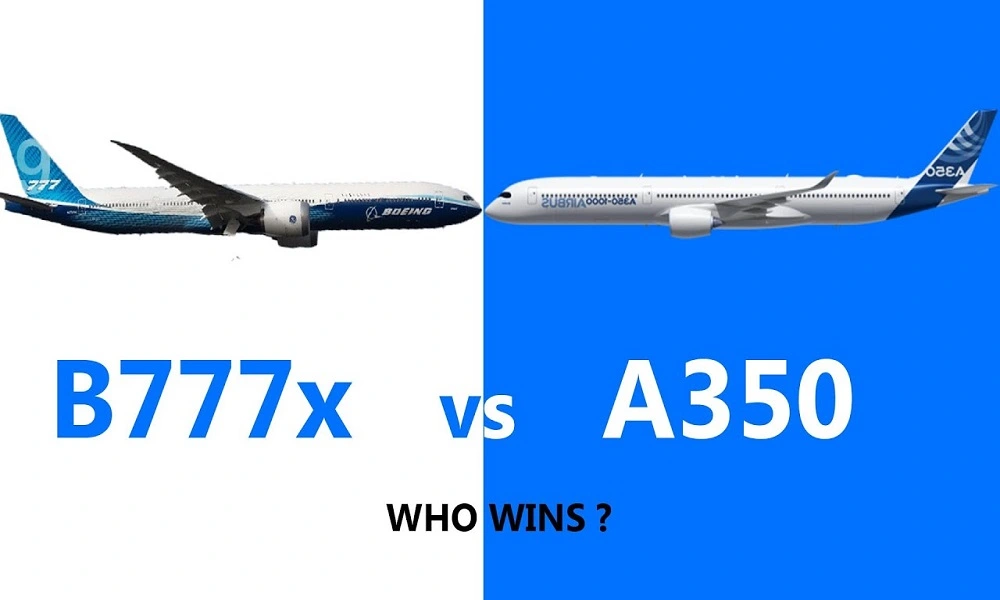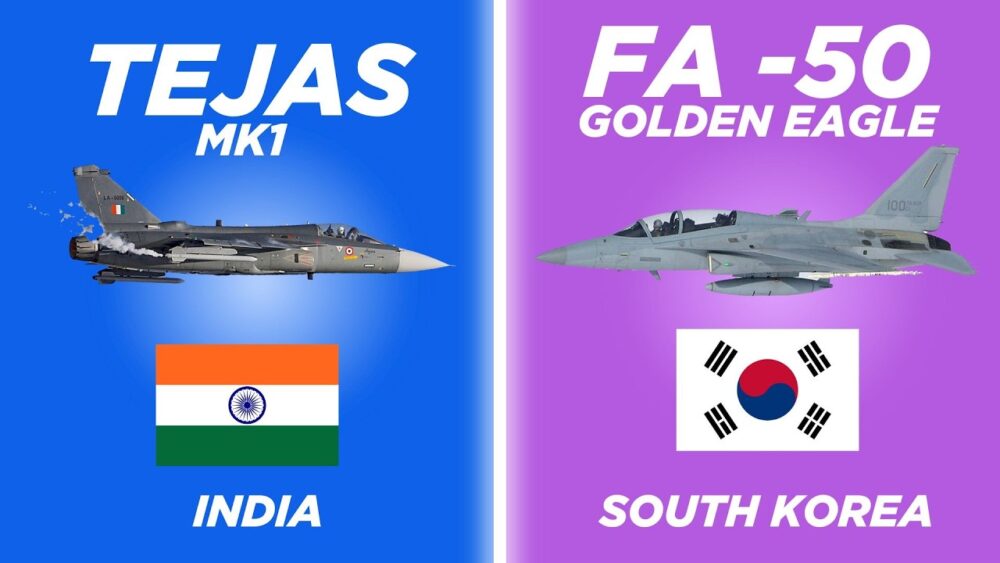Aircraft comparison
Mega Comparison of Boeing 777x vs A350-1000 Aircraft

The Boeing 777X and Airbus A350 are cutting-edge wide-body aircraft renowned for their advanced technology and reduced carbon emissions engines, marking them as flagship models of 21st-century aviation. Each aircraft offers unique capabilities and performance advantages.
Boeing’s 777X represents the latest evolution in the long-range, twin-engine Boeing 777 family. Notably, it incorporates innovative folding wingtips, optimizing efficiency during flight and enabling access to a broader range of airports.
On the other hand, the Airbus A350-1000 is a long-range, wide-body twin-engine airliner developed by Airbus, distinguished by its extensive use of composite materials comprising 53% of its structure. These materials contribute to its lighter weight and enhanced durability compared to traditional aluminium constructions.
Comparison of B777x and A350-1000
Length: The Boeing 777-9 measures approximately 251 feet 9 inches, while the Airbus A350-1000 has a length of 242.1 feet.
Wingspan: The Boeing 777-9 boasts a wingspan of 235.5 feet, compared to the Airbus A350-1000’s 212.43 feet.
Height: The height of the Boeing 777-9 is 64.7 feet, whereas the Airbus A350-1000 stands at 56 feet.
Cabin Width: Inside, the Boeing 777-9 offers a cabin width of around 19.7 feet, slightly wider than the Airbus A350-1000’s 18.5 feet.
Maximum Takeoff Weight: The Boeing 777-9 can take off with a maximum weight of 351.5 tons, while the Airbus A350-1000’s maximum takeoff weight is 316 tons.
Maximum Payload: The Boeing 777-9 can carry a maximum payload of 73.5 tons, compared to the Airbus A350-1000’s 68 tons.
Fuel Capacity: The Boeing 777-9 has a fuel capacity of 158.9 tons, significantly higher than the Airbus A350-1000’s 124.65 tons, allowing for a 34-ton advantage in fuel storage.
Range: The Airbus A350-1000 excels in range, capable of flying up to 16,100 km, whereas the Boeing 777-9 has a range of up to 13,500 km.
Cost: The Airbus A350-1000 is priced at approximately $366.5 million, while the Boeing 777-9 is marketed at $442.2 million, with the smaller 777-8 variant priced at $410.2 million.
When comparing the a350 vs 777x , both showcase cutting-edge technologies that define modern long-range aircraft.
Why LATAM retired its entire A350s fleet?Read more
The Boeing 777X employs advanced composite materials extensively in its wings, boasting the longest span of any commercial passenger airplane. Its unique feature of folding wingtips enhances operational flexibility in constrained airport spaces.
Powered by the powerful and efficient GE9X engine, tailored specifically for this model, the 777X benefits from superior aerodynamics that optimize fuel efficiency. Inside, the cabin draws inspiration from the Boeing 787 Dreamliner, offering wider windows, enhanced pressurization, mood lighting, and ergonomic design.
In contrast, the Airbus A350-1000 entered service in 2015 with Qatar Airways as its launch customer, incorporating 53% composite materials in its construction for reduced weight and increased strength over traditional aluminium.
Airbus A350-1000 now suitable for 480 Passengers:Read more
The A350’s wings incorporate natural-inspired flexing motions during flight to minimize drag and improve fuel efficiency subtly. airbus a350 vs boeing 777 it is equipped with Rolls-Royce Trent XWB engines known for their quietness and fuel efficiency, contributing to a quieter cabin environment.
Utilizing advanced Computational Fluid Dynamics (CFD), Airbus has optimized the A350’s aerodynamics, further reducing drag and enhancing overall efficiency.

Aircraft comparison
Comparison of the Indian built Tejas MK1A vs South korean FA 50

Today, we’ll explore two remarkable light combat aircraft: the Tejas MK1A and the FA-50 Golden Eagle. Both fighters are designed for versatility, making them ideal for various missions, from air-to-air combat to ground support.
The Tejas MK1A, developed by Hindustan Aeronautics Limited (HAL) in India, and the FA-50, a product of Korea Aerospace Industries (KAI), are both advanced aircraft equipped with modern technology and features.
10 Fascinating Facts About India’s AMCA Fighter Jet
In this Article, we will compare these two fighters in terms of their specifications, performance, capabilities, and roles in modern air forces. Let’s dive in and see how they stack up against each other!
Tejas is the second supersonic combat aircraft developed by Hindustan Aeronautics Limited (HAL), following the HF-24 Marut. It took its first flight in 2001 and was inducted into service with the Indian Air Force (IAF) in 2015. Currently, Tejas holds the distinction of being the smallest and lightest aircraft in its class of supersonic combat jets.
On the other hand, the FA-50 is South Korea’s first indigenous supersonic aircraft and is one of the few supersonic trainers in the world. Development of the T-50 began in the late 1990s, with its maiden flight taking place in 2002.
Russia Seeks Talks with India, Offers Tu-160 Bombers at Unbeatable Prices
The FA-50 boasts a higher production rate compared to the Tejas. Over the past 15 years, Korea Aerospace Industries (KAI) has produced nearly 200 variants of the FA-50, while Tejas has seen a lower production output.
In terms of international sales, the FA-50 is actively in service with multiple countries, including Indonesia, Iraq, the Philippines, Thailand, and Poland. Notably, Malaysia opted for the FA-50 over the Tejas, citing the FA-50’s strong service record as a key factor in their decision.
Here’s a SPECIFICATION of the Tejas and FA-50
Length: The Tejas measures 13.2 m (43 ft 4 in), making it slightly longer than the FA-50, which is 13.14 m (43 ft 1 in).
Max Takeoff Weight: The Tejas has a maximum takeoff weight of 13,500 kg (29,762 lb), compared to the FA-50’s lighter weight of 10,722 kg (23,638 lb).
Fuel Capacity: The Tejas has an internal fuel capacity of 3,060 liters (810 US gallons), while the FA-50 has a slightly lower internal fuel capacity of 2,655 liters (701 US gallons).
Powerplant: Both aircraft are powered by General Electric F404 turbofan engines, but the Tejas utilizes the F404-GE-IN20 variant with 48.9 kN (11,000 lbf) thrust dry and 85 kN (19,000 lbf) with afterburner. The FA-50 features the F404-GE-102 variant, producing 53.07 kN (11,930 lbf) thrust dry and 78.7 kN (17,700 lbf) with afterburner.
Maximum Speed: The Tejas has a maximum speed of 2,220 km/h (Mach 1.8), which is significantly faster than the FA-50’s maximum speed of 1,837.5 km/h (Mach 1.5).
Combat Range: The Tejas has a combat range of 739 km (459 mi), whereas the FA-50 has a much longer range of 1,851 km (1,150 mi).
Hardpoints: The Tejas features 9 hardpoints with a total capacity of 5,300 kg, while the FA-50 has 7 hardpoints capable of carrying up to 5,400 kg of payload.
Cost: The Tejas is priced at approximately $40 million per unit, whereas the FA-50 ranges between $30 million to $40 million per unit, making the FA-50 potentially more cost-effective depending on the variant chosen.
Weapons
When it comes to weaponry, the Tejas MK1A offers a wider range of options compared to the FA-50 Golden Eagle. The Tejas MK1A is equipped with beyond-visual-range (BVR) missiles, allowing it to engage targets at greater distances, enhancing its combat effectiveness in air superiority missions. Additionally, it can carry precision-guided munitions for accurate strikes against ground targets, as well as standoff weapons, which can be launched from a distance to minimize exposure to enemy defenses. This diverse armament enables the Tejas to perform a variety of roles, from air-to-air combat to ground support.
In contrast, the FA-50 also features a respectable armament capability but has a more limited selection. It can carry air-to-air missiles like the AIM-9 Sidewinder and AIM-120 AMRAAM, as well as precision-guided bombs. However, its focus leans more toward close air support and light strike missions rather than the extensive versatility that the Tejas offers.
Naval Variant
The Tejas Mk1A has a naval variant designed for carrier operations, which is still in development. This version includes upgrades like a nose droop for better visibility during landings and takeoffs, a strengthened undercarriage, and an arrestor hook for safe landings on aircraft carriers.
In contrast, the FA-50 does not have a naval variant. While it’s versatile for different missions, it’s not designed for carrier operations, limiting its flexibility compared to the naval Tejas, which can operate from both land and carriers.
-

 Aviation2 months ago
Aviation2 months agoMicrosoft Flight Simulator Raises $3 Million to Bring Back the An-225 Mriya
-

 Airlines2 months ago
Airlines2 months agoQatar Citizens Can Travel to the United States Without a Visa
-

 Aviation2 months ago
Aviation2 months agoQatar Airways bans these new Electronic Devices on plane
-

 Airlines2 months ago
Airlines2 months agoJapan Airlines Rolls Out Free Domestic Flights to International Passengers
-

 Defence2 months ago
Defence2 months agoWhich Country Has the Largest Fleet of Fighter Aircraft?
-

 Airport2 months ago
Airport2 months agoWestern Sydney Airport Welcomes Its First Plane After 6 Years of construction
-

 Travel2 months ago
Travel2 months agoQatar Airways Launches Four Additional Flights from Amsterdam
-

 Aviation2 months ago
Aviation2 months agoDid you know ? Once Boeing 747 carried 1088 passenger in 1991








